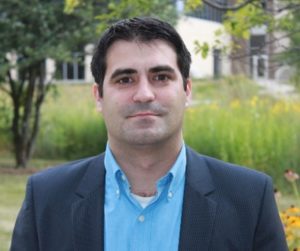Biomass is a promising alternative to petroleum to produce carbon-based products, both chemicals and fuels. Many technologies have been proposed to produce bio-based products similar to those obtained from petroleum that can be easily introduced in the markets as replacements.
However, a new trend is emerging that focuses on products with better properties than petroleum derived ones due to special functionalities that can be found in biomass but not in petroleum (i.e. furanic rings vs aromatic rings). Nevertheless, the possible technical advantages of the bio-based products won’t be enough to replace petroleum, and obtaining new products at competitive prices will be necessary. To achieve this economic goal, we need to obtain the maximum value per unit of biomass and that can be done only if all major fractions in the biomass (cellulose, hemicellulose and lignin) are valorized. Due to the very different nature and structure of these fractions, their processing requires different conditions. So, an initial step where these fractions are separated one from each other is necessary, and organosolv processes (processes that use an organic chemical as solvent) have proved to be the most promising.
Why choosing GVL as a solvent?
There is no doubt that working with an organic solvent complicates any process. However, the advantages of using an aprotic solvent such as GVL makes the idea interesting. Because hydrolysis reactions (chemical reactions where water breaks a bond and a large molecule is converted into two smaller molecules) are faster in GVL than in water, we can perform the fractionation at low temperature (120-130°C), acid concentration (<0.1 M sulfuric acid), short residence time (<60-120 min) and low pressure (<3 atm), preventing the degradation of the main fractions, cellulose, hemicellulose and lignin. In addition, GVL is able to solubilize lignin without the aid of external chemicals allowing us to work at high biomass concentration (>20 wt%) which is critical for the economics of the process. In this sense, the recovery of the solvent is also critical. There is no doubt that there will be some solvent losses in the process, mainly as impurity on the output currents, but GVL is a very stable molecule that does not react with biomass derived products such as acetic acid, formic acid, lignin, sugars… etc. as occurs with other common solvents, such as ethanol. Besides, GVL can be easily produced by hydrogenation of levulinic acid, a building block that can be produced from biomass and from side streams. The solvent can thus be obtained internally. Conversion of C5 sugars to furfural, an important biomass derived building block, is very effective in the GVL solvent with high yields (up to 95%) in a continuous reactor. These high yields are achieved without a quick removal of the furfural from the reaction liquid to avoid its degradation, which has been the main issue to scale up several furfural production technologies, being a great advantage that allow us producing low cost furfural.
What is next in GVL organosolv process?
To commercialize the process, more work is necessary to study the recovery and reutilization of the GVL. That is why a full task of the project is dedicated to those studies. Performing an effective cellulose washing is one of the challenges, not only to increase the purity and value of that cellulose but to minimize solvent loses. Precipitation of the lignin, requires the addition of large amounts of water, which has to be removed later in the process. This requires a lot of energy and penalizes the economics. In FRACTION we are looking for alternatives to solve this problem. In FRACTION we are also working on expanding the applications for furfural to take full advantage of this product stream, producing furfural at a low cost is key to exploit its functionality as a building block to produce biofuels and biochemicals.

Dr. David Martin Alonso (CSIC) is the project coordinator of FRACTION and WP leader in WP 1 Lignocellulose fractionation through GVL organosolv process.